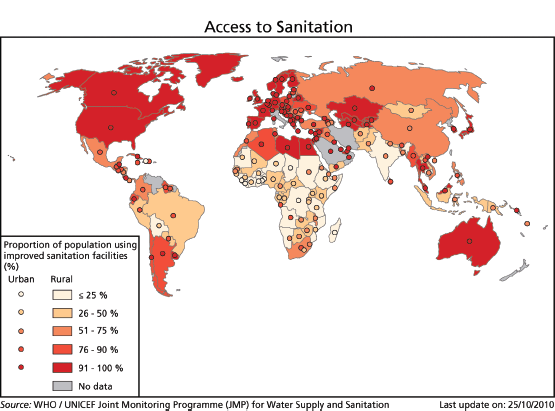
Definition: Millennium Development Goal 7, target 7c is to “Halve, by 2015, the proportion of people without sustainable access to safe drinking-water and basic sanitation.” The two monitoring indicators to assess progress toward achieving this goal are (shown opposite) the Proportion of population using an improved drinking water source and Proportion of population using an improved sanitation facility. An improved drinking-water source is defined as one that is protected from outside contamination, in particular from contamination with fecal matter. An improved sanitation facility is defined as one that hygienically separates human excreta from human contact.
Trends: In 2008 an estimated 2.6 billion people do not have access to an improved sanitation facility and at the current rate of progress it is unlikely that the global sanitation target 7c of the Millennium Development Goals will be reached. Most countries in Sub-Saharan Africa and Asia are not on track to meet the sanitation target. The world is, however, on track to meet the drinking-water target. But that still leaves an estimated 884 million people (in 2008) without an improved drinking-water source, with Sub-Saharan Africa accounting for 37% of that number. Increasing water scarcity, as a result of population growth, urbanization, and climate change may challenge future progress in access to adequate water and sanitation.
Significance for infections:
Stay updated, free articles. Join our Telegram channel

Full access? Get Clinical Tree




